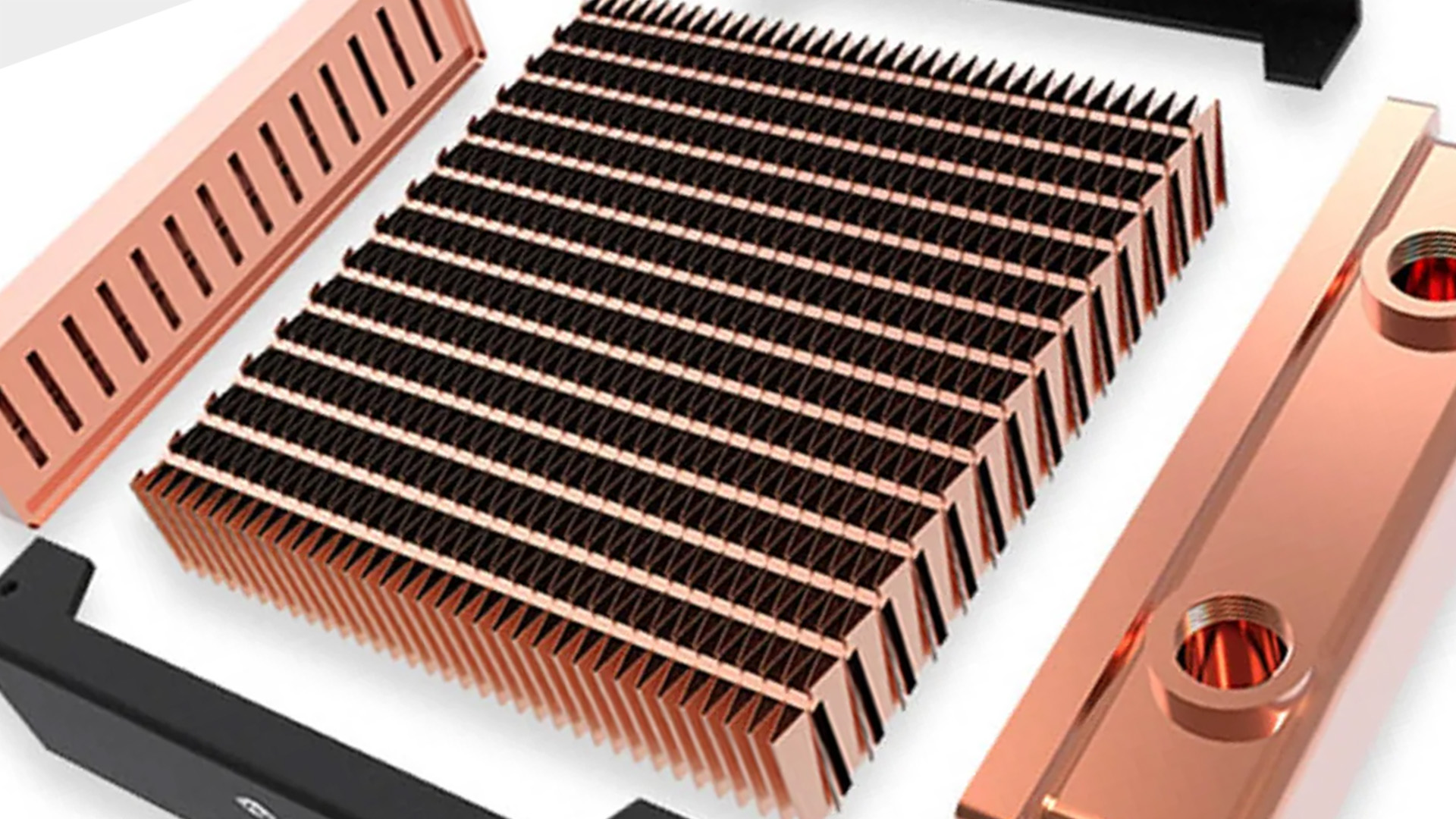
In-depth testing by Igor's Lab shows brass used instead of copper within some radiators, among other complaints.
How do you find out what’s actually inside your all-in-one liquid cooler? What’s clear from an investigation by Igor’s Lab is that the manufacturer’s specs sheet won’t always provide an accurate answer to that question. Wallossek found two out of the six coolers ripped apart and prodded for testing did not contain the copper parts the manufacturer advertised and were usually replaced by copper/zinc alloy, or brass by another name.
Igor’s Lab ripped apart six 120mm liquid coolers for testing:
Alphacool NexXxoS ST30 Full Copper X-FlowAqua Computer Airplex Radical 2/120Bykski CR-RD120RC-TN-V2 Full CopperEKWB Quantum Surface P120MHardware Labs Black Ice Nemesis GTS – 120 XFlowWatercool Heatkiller Rad 120-S
Each cooler claims a different combination of materials making up their often unseen innards, though primarily those of a premium tilt will use copper for its thermal conductivity. Copper’s thermal conductivity is rated to around 401 W·m−1·K−1 (watts per metre-kelvin), which is a good deal higher than aluminium at around 237. There are other factors at play for cooling efficacy, but that’s often why you’ll find coolers bragging about full or part copper construction—as indeed some of those tested by Igor’s Lab claim.
Two coolers come out of Igor’s Lab testing pretty much unscathed. The ‘full copper’ Alphacool NexXxoS ST30, which was genuinely made of copper throughout, and the mostly aluminium Aqua Computer Airplex. Both made claims of which materials they were using and where, and Wallossek’s testing proved that to be true.
The Hardware Labs Black Ice Nemesis GTS – 120 XFlow also comes out fine. It only claims copper construction for the cooling fins, and that’s what was found during testing. Though why the rest of the materials aren’t listed could be because they’re primarily a copper/zinc alloy, in other word’s brass, of a relatively low copper content—63/37 Cu/Zn but some 70/30 Cu/Zn. All in all, nothing massive to worry about but not exactly a premium construction, either.
The EKWB Quantum Surface P120M claims to come with Copper H90 tubing, which as Wallossek points out gives the impression that it’s copper, whereas ‘H90’ designates it as an alloy. Testing put it at 90% copper and 10% zinc. So it’s brass. Technically it is listed as an alloy, but in a way that Wallossek feels isn’t entirely clear to the customer. Wallossek had some other complaints with the EKWB cooler, such as the “soft, cheap screws” and some flux residue.
Bykski’s CR-RD120RC-TN-V2 Full Copper did live up to expectations of what was advertised, however. The investigation found that the so-called full copper construction used a lot of brass in the place of pure copper. High traces of lead were also found within the solder, which may fall foul of RoHS certification.
Below: all six coolers tested by Igor’s Lab.
(Image credit: EKWB)
(Image credit: Aqua Computer)
(Image credit: Bykski)
(Image credit: Alphacool)
(Image credit: Watercool)
(Image credit: Hardware Labs)
Bykski has verified the results of the investigation from its own testing and has said it is moving to remove the batch from sale, which it claims was produced by a different OEM. This OEM is also reportedly being held responsible for switching to a copper alloy within the channels, rather than copper.
(Image credit: Future)
Best AIO cooler for CPUs: Keep your chip chill.
Best air cooler for CPUs: Classic, quiet cooling.
Lastly, the Watercool Heatkiller Rad 120-S. This product was found to not offer the copper channels as originally advertised on its website, and instead used a 65/35 Cu/Zn brass in its place. The cooling fins were advertised as copper and were tested as copper. Igor’s Lab notes, however, that the website has since been updated for the Heatkiller Rad, so that the exact wording for this product makes clear that channels are made of brass, not copper, as had previously been stated. Igor’s Lab says it has not heard from the company directly.
For the full testing data with plenty of images from some very expensive testing gizmos, I recommend checking out the original story on Igor’s Lab.
Igor’s Lab chalks up the issues to complacency rather than malevolence. Wassolek notes that he believes “permanent monitoring is actually important and essential”. For the few companies with incorrect specs, it also appears as though something is being done to rectify the issue. Though it did take Wallossek’s hard work in hacking into them to get things moving, and because of that, he says he will collect another sample of random coolers for the same treatment. Let’s hope that next batch gives us less to talk about.






